Every physical dimension is measurable, and since our measurement systems are nothing but conventions, it is obvious that the same object can be measured in different ways and we can find a formula that allows us to convert values from one measuring system to the other, i.e. Imperial Units to Metric, with small approximation problems.
If we need to convert 100 degrees Celsius into Fahrenheit all we need is to apply the formula °F = (°C x 1,8) + 32 and we will get 212, while 200° C makes 392° F. We can see that if we double the Celsius degrees, the same doesn’t happen with Fahrenheit, but we need to stick to the formula in order to get the most simple and accurate answer.
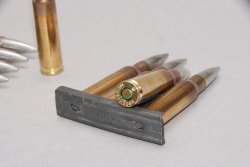
Same goes for length: you have a 150mm barrel and you want to see how that translates in inches, all you need to do is divide it by 2,54 and you get 5.9 inches.
A cartridge developes 2500 bar? Multiply it by 14,5 and you get the pounds per square inch value or PSI, if you prefer.
To go from one system to the other, all we need is a simple formula. Right? Sort of…
It is good to remember that some invariables are irrational numbers, with infinite values after the dot and so we need to round it up, just like we do with the Greek π which can make our calculations a little different.
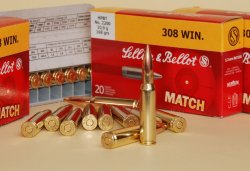
Aside from this small, and as far as we’re concerned insignificant, inaccuracies, converting a length into a different measure system is rather simple and linear. Or is it?
There are some cases where the pressure values don’t seem to correspond at all.
Let’s take the maximum allowed for various calibers used in firearms – hand guns or rifles: in the U.S. the values are expressed in PSI (pound per square inch) in Europe they are expressed in bar (or pascal, one Newton per square meter, so 1 bar = 10. 000 pascal) so the conversion is 14,5: 1000 bar is 14.500 PSI.
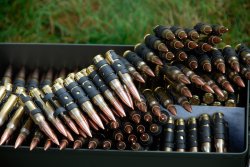
Now let’s look at, for example the .40 S&W round: in the U.S. the maximum pressure set by SAAMI is 35 000 PSI, in Europe CIP set it to 2 250 bars. So what’s the conversion? 35 000 divided by 2 250 makes 15,5 and a little more, so close to the invariable 14,5 we talked about earlier.
Now that we’ve found this out, let’s focus on another cartridge: the .357 Magnum. Things get difficult here: 35 000 PSI in the U.S of A and 3000 bars CIP with a 11,6 conversion.
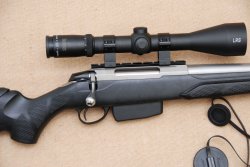
There was no mathematical mistake in these calculations: the maximum pressures are set by relative commissions that examine various aspects and following those aspects more or less accurately, so it is not safe to say they are always the same.
An example? The remote possibility that they can be a 8x57I rifle, that have their barrels bored with a .318 and not a .324 diameter, pushed SAAMI, the American institution that sets the characteristics of commercial ammunition to set the limit of 35 000 PSI for 8x571S caliber, while Europe allows this German cartridge 3 900 bars, which is more than 56 000 PSI!


However, apart from the 8x57 and a few others, the commercial ammunitions on the other side of the Atlantic have lower values so they are safer: it is important to understand if we are measuring a specific cartridge simultaneously and with the same methods as it is measured in different systems, for example in PSI and bar, the two pressures would show the validity of the conversion system.
But if we use different protocols and different systems to measure the same thing, the values acquired would definitely be very different from the conversion system and we can’t tell for sure there is another formula that allows us to move from one metric system to the other.
Crusher, piezoelectric sensors or strain gauge methods give different responses depending on the pressure, as if you moved the measuring point of the sensor long the barrel; some protocols require the bullet to correspond to the measuring point, other don’t: combining these possibilities, you get different values for the same cartridge and there is no way of getting the exact conversion with a simple formula.
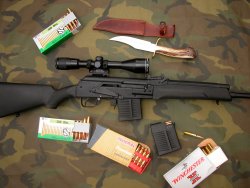
It is due to these inconsistencies that derive from different methods that we hear these urban myths that so often spread quickly online, and they are seldom challenged.
An example of these myths would be the rumor that the cartridges that have been considered equivalent for years, such as the .308 Winchester which corresponded to the military 7,62x51mm NATO, actually have different pressure levels.
It’s been often said that the two cartridges, excluding the minor inconsistencies in dimension which may be due to different quota tolerance, there is a huge pressure difference, about 12 000 PSI which is 860 bar: it would be dangerous to shoot with a stronger caliber using a gun meant for weaker ammo, it this was true, but it is not.
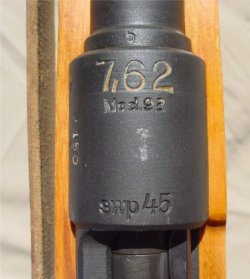
But the rumors stay the same, thanks to internet and it’s amazing Domino effect in regards to exaggerating abilities: once a false myth has been repeated many times, it becomes ipso facto the unquestionable truth.
So let’s try to understand how this myth earned some ground. If we examine the characteristics of the American military 7,62x51mm round we can see that the maximum pressure is 50 000 PSI while its civilian copy, the .308 Winchester, gets to 62 000 PSI.
This makes it seem like the people are right: 12 000 PSI of difference is not little and this would confirm the rumor claiming that shooting with a 7,62x51 in a .308 gun would have no consequences, while using a civilian ammunition, such as Hunting rounds, could cause big troubles.
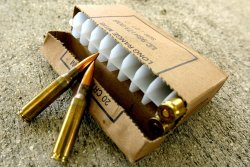
But, there is a huge “but”: the two pressure levels are exact, but they are determined by different protocols, so we can’t compare them! It is not the only case in every-day life, and I’ll give you another example that will help you understand this issue.
Let’s think about gas consumption of a car. If we read that a certain car can go X kilometers with one liter of gas while another car can get up to Y kilometers, we can say which one spends less, but it is only true if the values are measured by the same protocol: for example using the same route and a car with a full tank.
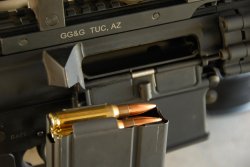
Now let’s say one of the manufacturing houses uses a very different protocol, and one tests their cars up hill and the other in a plain. Even this will lead to different results and it will give different values to the cars we examined so what does that mean for our hypothetical cars and their consumption, seen that we’ve used different rules? Is there a “conversion” formula that allows us to transform the consumption of the two cars? The answer is simply negative.
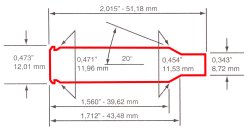
This means that, even though one analysis says that one of these cars uses less gas, there is no way of knowing if this is true, but we can compare them by their every-day use by comparing their consumption in the city and on the highway: it is easy to see that the proportions of their values don’t correspond to different cars and there are cars that spend less gas in the city but the opposite happens in another context: the two consumptions are linked to a mathematically precise formula.

Once we’ve cleared this example, we can go back to the original .308-7,62 NATO question: one gets 62 000 PSI if we measure a series of rules that are those set by American SAAMI, while 7,62x51 is measured by those set by the American Army, completely different and older: you should know that if you use the same protocol the two cartridge would be equivalent, with mere 2000 PSI of difference (60.000 for 7,62x51 and 62.000 for .308), only 138 BAR.
Crusher and electronic systems always give different values to the same pressure and it is not always very linear: there are two different systems of measuring the pressure and they show values in different measuring units and if we use different criteria, the discrepancies increase.
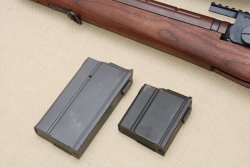
Crusher and Piezo use two different measuring systems that have used the same unit, a PSI value, for historical reasons, and this caused a lot of confusion.
The Crusher system uses a cylinder made of copper and it was introduced in the end of the XIX century and up to a few years ago, it was the only system available: it was obvious that values measured by the American system of pressure measurement, the PSI (pound per square inch).
When the electronic systems became commonly used, PSI was used once again, but soon it became obvious that the electronic version gave higher values with different results: two meauring units were needed since there was no magic formula to convert a value from one system to the other.

The measure unit linked to Crusher was then called CUP (Copper Unit Pressure) so the Pressure unit for (Crusher) copper, while individual values of modern systems still use PSI but this complicated things because people kept on using the same name for different values set by Crusher, creating quite a confusion and confirming our urban legend regarding different pressure values between the 7,62x51mm and the .308 Winchester: the military regulated the pressure with Copper Crusher and SAAMI with piezoelectric sensors.
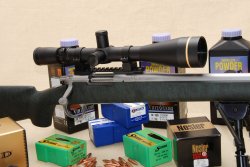
So to sum up: it is true that the military ammunitions have a maximum limit of 50 000 units of pressure but it is expressed in CUP while the civilian ones get to 62 000 PSI and CUP and PSI cannot be confused!
The infamous difference of 12 000 PSI is due to the wrong calculation and it makes no sense because you cannot subtract values expressed in different measuring units.
The fact that the military ammunition is under the maximum limit while some hunting cartridge tries to use every possibility to offer more to the hunter is another issue we need to be aware of, but this is very different from the problem of a danger that comes with using two ammunitions with different pressure levels.

Not everything you read online is true, and, unfortunately, it is very easy to come by stupid ideas in printed version, which should, at least, be a result of responsible individuals, but it is also true that just because something’s been said many times it doesn’t mean it’s true: Vox Populi, sure- but not Vox Dei.
.308 and 7.62x51mm Instructions manual
Once we’ve cleared up the fact that the 7.62x51mm and the .308 rounds have approximately the same pressure, we can move on and see if there are other issues we should focus on before using the commercial .308 Winchester cartridge in military guns
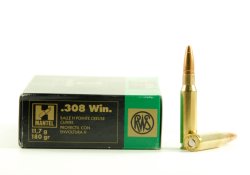
The one thing that actually matters is a different quota of larger cartridge chambers present in military guns: if we think that military ammunition has a more compact bullets when it comes to the type and width of the brass, while the civilian models have thinner cases so it can be completely loaded. This is why, if you use the civilian bullets in your military cartridge chamber, you could cause excessive lengthening of the case.
So what’s the risk? Basically, there is none, if you use a factory-manufactured cartridge: excluding the extreme situations, the case gets longer and thinner near the case head, but there is no separation or breakage. However, if you use the same cases to reload your cartridges, obviously the breakage of the cases is going to be noticeable from the first loading.
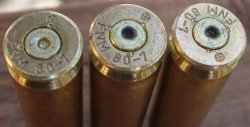
With well-designed guns, the shooters face should be safe from various gases in case of a failure, but if you are left-handed and are using a gun with its ejection port on the right, there is a risk of damages of this sort: before shooting with a commercial so-called “hot” cartridge while using a military 7.61x51 (such as a US M14), you should control the values of the head space and act appropriately.
In any case, shooting commercial cartridges with high values using an ex-military gun is not the best idea you may have, first of all because it is expensive and also, because it could be dangerous, as we’ve said before.

Other than “cold” measures, you need to consider the possible “elasticity” of the breech, elasticity that is almost inevitable on guns with rear breech lock, like FAL FN for example, that have n asymmetric L frame. When we tested it on this gun, after four reloads we realized that we’d always have the separation of the case head.
So before using an ex-military gun, you need to check the chamber. How? By using the classical three Go-No Go go and Field .308 gauges that any good gunsmith - who needs to make sure they’re selling a safe gun - has, whether they are selling used or ex-military guns.
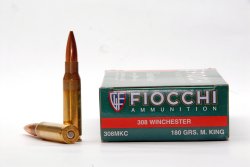
Actually, you just need the No Go and Field gauges: ideally, the gun would refuse to close when you load it with No Go, but it is very rare on ex-military guns.
The most important thing is that the gun doesn’t close with Field cartridge: the measures could be within NATO limits, but the commercial bullets would be much challenged.
Once you test your gun in this way, you can shoot with civilian cartridges of all kinds without any fear and you can reload in the last minute as well.
Loading – who cares about 12 000 fake PSI of difference between 7.62mm and .308. What pressure do these cartridges develop?
.308 and 7.62x51mm Standard characteristics
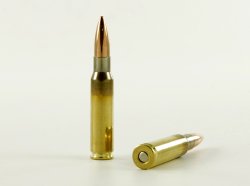
7.62x51mm Military ammunitions need to meet strict requirements that allow a safe use in any condition, even if you are in the field, in an extreme situations.
The classical 7.62x51mm cartridge uses a full metal jacket bullet which weights 147 grams and it is pushed up to 2750 fps with about 50 feet per second margin: from 2700 to 2800.
To get these standard values you need a pressure lower than the maximum, but as we’ve said, you need to consider the worst case scenario.
Civilian .308 Winchester ammunition, on the contrary, exists in many forms, and they are usually all under the limit in standard conditions.
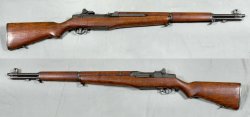
Semi-automatic gas-operated guns force you to consider another parameter, very rigidly set by specific military sections, which is the port pressure: it is very difficult for a civilian cartridge to respect these limits, so you should consider this before using .308 in ex-military guns.
If the port pressure is too low, you can have jamming (which is very rare but not impossible), while if you have the opposite problem, an excessive pressure, the situation is more dangerous. The latter problem is much more common.

Many .308 loads come with slow burning rate powder, in order to keep the maximum pressure down and to give a longer barrel time to the bullet. This results in the gas port with higher gas pressure, even much higher than it is normally allowed: even in well-designed guns, you will stress various pieces like the gas piston or the charging handle, which will cause overly fast recoil of the bolt and a too strong stop-butt.
In worst case scenario, like with the Garand (many M1 have been rechambered in 7.62x51mm from the original .30-06) , you could case a deformation of the charging handle or other damages. This is why it is not recommended that you shoot .308 cartridges in 7.62x51 guns, even though this has little to do with their maximum pressures.










